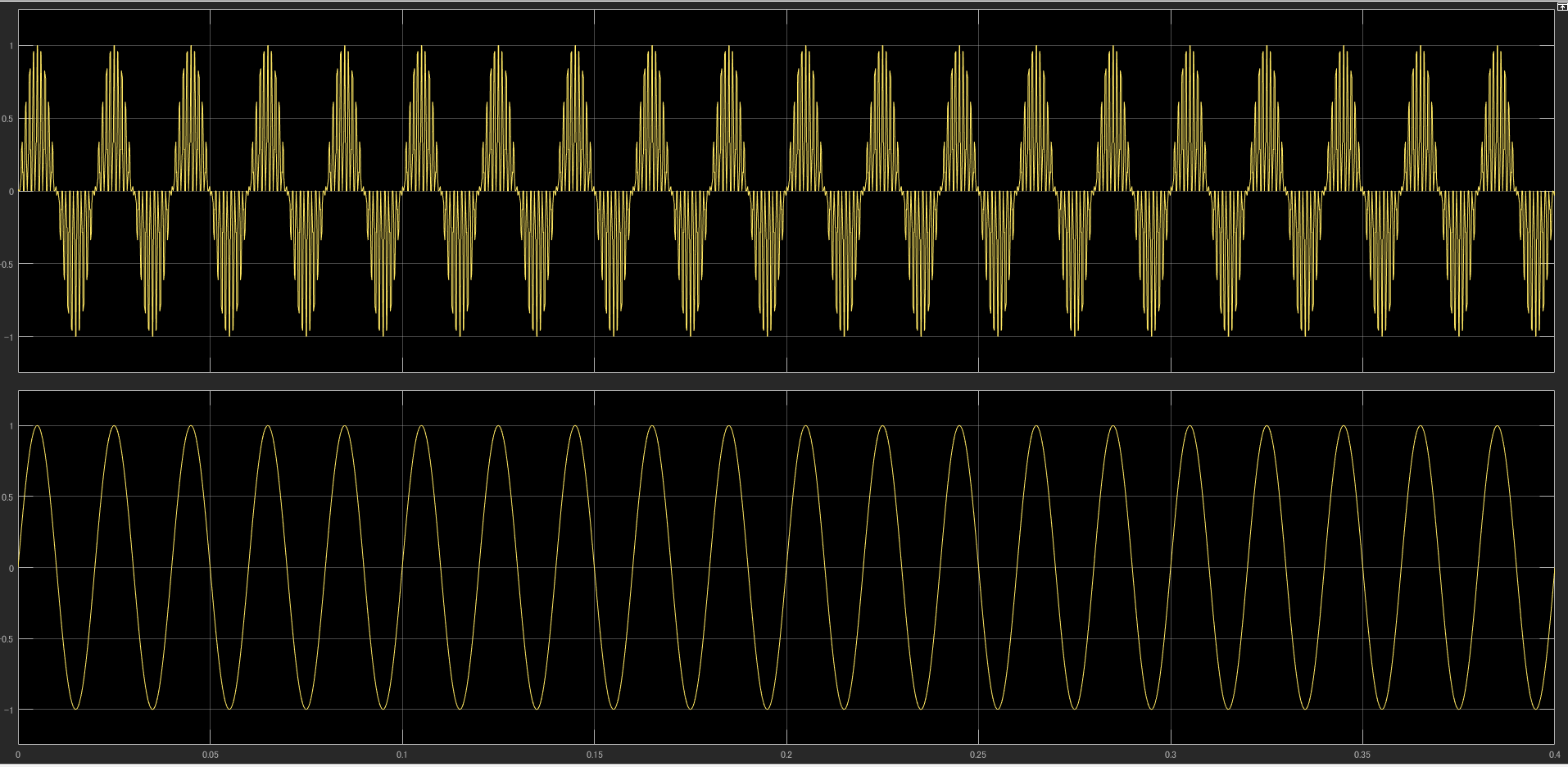
http://integratedsys.web.fc2.com/other/SC.pdf
import numpy as np
import matplotlib.pyplot as plt
from scipy import signal
# フィルタのパラメータ
C1 = 100e-12 # 100 pF
C2 = 10e-12 # 10 pF
# サンプリング周波数
fs = 1000.0 # サンプリング周波数 [Hz]
# クロール型の伝達関数
num_cascade = [-(C1/C2), 0]
den_cascade = [1, -(1 - (C1/C2))]
sys_cascade = signal.TransferFunction(num_cascade, den_cascade, dt=1/fs)
# バタフライ型の伝達関数
num_butterfly = [-(C1/C2), 0]
den_butterfly = [1, 1 - (C1/C2)]
sys_butterfly = signal.TransferFunction(num_butterfly, den_butterfly, dt=1/fs)
# インパルス応答を計算
t_impulse, y_impulse = signal.dimpulse(sys_cascade)
t_impulse_b, y_impulse_b = signal.dimpulse(sys_butterfly)
# プロット
plt.figure()
plt.subplot(2, 1, 1)
plt.stem(t_impulse, y_impulse[0])
plt.title('Cascade Type Impulse Response')
plt.xlabel('Time [samples]')
plt.ylabel('Amplitude')
plt.grid()
plt.subplot(2, 1, 2)
plt.stem(t_impulse_b, y_impulse_b[0])
plt.title('Butterfly Type Impulse Response')
plt.xlabel('Time [samples]')
plt.ylabel('Amplitude')
plt.grid()
plt.tight_layout()
plt.show()
import numpy as np
import matplotlib.pyplot as plt
from scipy import signal
# フィルタのパラメータ
C1 = 100e-12 # 100 pF
C2 = 10e-12 # 10 pF
# サンプリング周波数
fs = 1000.0 # サンプリング周波数 [Hz]
# クロール型の伝達関数
num_cascade = [-(C1/C2), 0]
den_cascade = [1, -(1 - (C1/C2))]
sys_cascade = signal.TransferFunction(num_cascade, den_cascade, dt=1/fs)
# バタフライ型の伝達関数
num_butterfly = [-(C1/C2), 0]
den_butterfly = [1, 1 - (C1/C2)]
sys_butterfly = signal.TransferFunction(num_butterfly, den_butterfly, dt=1/fs)
# 周波数応答の計算
w_cascade, mag_cascade, phase_cascade = sys_cascade.bode()
w_butterfly, mag_butterfly, phase_butterfly = sys_butterfly.bode()
# プロット
plt.figure()
plt.subplot(2, 1, 1)
plt.semilogx(w_cascade, mag_cascade)
plt.title('Cascade Type Discrete Bode Plot')
plt.xlabel('Frequency [rad/sample]')
plt.ylabel('Magnitude [dB]')
plt.grid()
plt.subplot(2, 1, 2)
plt.semilogx(w_cascade, phase_cascade)
plt.title('Phase')
plt.xlabel('Frequency [rad/sample]')
plt.ylabel('Phase [degrees]')
plt.grid()
plt.tight_layout()
plt.figure()
plt.subplot(2, 1, 1)
plt.semilogx(w_butterfly, mag_butterfly)
plt.title('Butterfly Type Discrete Bode Plot')
plt.xlabel('Frequency [rad/sample]')
plt.ylabel('Magnitude [dB]')
plt.grid()
plt.subplot(2, 1, 2)
plt.semilogx(w_butterfly, phase_butterfly)
plt.title('Phase')
plt.xlabel('Frequency [rad/sample]')
plt.ylabel('Phase [degrees]')
plt.grid()
plt.tight_layout()
plt.show()
import numpy as np
import matplotlib.pyplot as plt
from scipy import signal
# Define the transfer function parameters
C1 = 1e-12 # 1 pF
C2 = 1e-12 # 1 pF
fC = 1e3 # 1 MHz
numerator = [C1 * fC]
denominator = [C2, 0]
# Create the transfer function
system = signal.TransferFunction(numerator, denominator)
# Define the frequency range for the plot
w, mag, phase = signal.bode(system)
# Plot the magnitude response
plt.figure()
plt.semilogx(w, mag)
plt.title('Bode Plot of Sample and Hold Circuit')
plt.xlabel('Frequency [rad/s]')
plt.ylabel('Magnitude [dB]')
plt.grid(True, which='both', linestyle='--', linewidth=0.5)
# Plot the phase response
plt.figure()
plt.semilogx(w, phase)
plt.title('Phase Plot of Sample and Hold Circuit')
plt.xlabel('Frequency [rad/s]')
plt.ylabel('Phase [degrees]')
plt.grid(True, which='both', linestyle='--', linewidth=0.5)
# Show the plots
plt.show()



